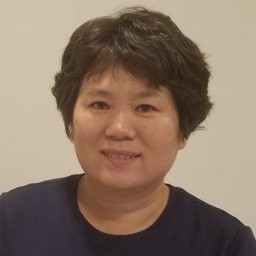About This Project
Our team at iNNO MeDevice aims to improve the prediction of the effects of chemicals and their metabolism on humans with an “Advanced Multi-Organoids-Chip System (AMOS)”, an innovative microfluidic culture and screening system. By merging vascularized human organoids, the AMOS provides a comprehensive preclinical platform that offers systemic-level insights. This breakthrough approach enables more accurate and efficient screening of potential drugs and toxic substances in drug development.
Ask the Scientists
Join The DiscussionWhat is the context of this research?
Our project aims to enhance the drug development process by integrating multiple vascularized human organoids with AMOS to offer systemic preclinical insights. This innovative technology regulates the proliferation of pathogenic E. coli and predicts human response to drugs, including Atezolizumab. Systemic interactions play a vital role in organ responses to injury, disease, and therapy, making it essential to comprehend their significance in maintaining tissue homeostasis in both healthy and diseased conditions. The placement of multiple vascularized organoids on AMOS’s microchambers allows for organ cross-communication, enhancing systemic disease modeling and screening. Ultimately, this results in better predictability of human responses to drugs and allows more efficient drug screening.
What is the significance of this project?
Drug development is costly and time-consuming, with a single drug taking up to 15 years and costing over $2.6 billion to bring to market. Inefficiencies arise from reliance on in vitro and animal testing before human trials, which can lead to mismatches between drug efficacy and toxicity in animal models and humans. AMOS technology improves drug development by predicting human response to drugs, including Atezolizumab, and regulating bacterial proliferation, such as pathogenic E. coli, long-term. Our AMOS enables us to forecast the efficacy and toxicity of drug candidates, with superior predictive power towards clinical trials. AMOS reduces drug development costs and timelines by accurately predicting human response to drugs, preventing toxic drugs from advancing through clinical trials.
What are the goals of the project?
Our team construct an integrated AMOS that allows access to the lumen and mucus of multiple human organs at their smallest biological scale to model host-microorganism interactions.
The objectives of this project are: First, we will create an integrated AMOS by 3D printing technology. We will validate AMOS by testing peristaltic motions with FITC dextran and E. coli on the stage of an upright microscope with a camera. We will compare the AMOS peristaltic motions to those observed in the human body. Additionally, we will validate AMOS by screening an approved drug, such as Atezolizumab, using peristaltic motions. The success criteria for AMOS will be based on its ability to accurately emulate the physiological performance of the human body and its potential for perfect clinical translation.
Budget
The budget allocation primarily focuses on utilizing facilities, materials, and supplies for device fabrication and generating data from AMOS. Additionally, we aim to attend relevant grantees workshops and technical conferences to advance our research and stay updated with the latest advancements in our field.
The clear and flexible polymer composition of AMOS enables the regulation of luminal contents and bacterial proliferation, such as pathogenic E. coli. Additionally, AMOS can screen approved drugs like Atezolizumab with various vascularized human organoids, making it an ideal in vitro tool for basic research, as well as pharmaceutical and biotech industry applications.
Endorsed by
 Project Timeline
Project Timeline
Our project will be conducted in three distinct stages. Firstly, we will focus on the fabrication and validation of the AMOS device, which will involve testing the flow of cultured multi-organoids with peristaltic movements. Secondly, we will generate preclinical data using the AMOS device. Finally, we will publish a non-provisional US patent and participate in a grantees workshop and technical conference.
Jun 07, 2023
Project Launched
Jun 07, 2023
Project Launched
Aug 01, 2023
Design, fabrication, and validation of the AMOS device
Nov 01, 2023
Test the flow of cultured multi-organoids with peristaltic movements via AMOS
Jan 01, 2024
Generation of preclinical data using the AMOS device
Meet the Team
Team Bio
Our team comprises of professionals with diverse skills and extensive experience in developing cutting-edge medical technologies. Our current focus is on the development of the AMOS, a microfluidic culture and screening device that accurately mimics the complex structures and functions of multiple human organs at the biological scale. We remain open-minded about collaborating with other industry partners, as it strengthens our position to bring innovative products to the market successfully.
Paul (Kang Kug) Lee, PhD
Dr. Paul (Kang-Kug) Lee is the Founder & President of iNNO MeDevice, Inc. and is serving the company as a CEO. At iNNO MeDevice, Paul and his multidisciplinary team have a vision to commercialize revolutionary microfluidic platforms: advanced multi-organoids-chip predictive system (AMOS); remote plasma self-sampling nanodevice (RPSN) integrated with the porous nanobead packed column. His areas of interest are microfluidic lab-on-a-chip, innovative medical devices, BioMEMS, and organoids/cells-on-a-chip.
Mi Young Ryu
Ms. Mi Young Ryu works as a Laboratory Manager and is responsible for managing all the company's facilities. She also assists in the manufacturing of the AMOS prototype and organizes all the outcomes generated from the developed AMOS technology. With her artistic expertise, she skillfully edits all figures and pictures in our publications, including grant proposals, US patents, and journal articles.
Lab Notes
Nothing posted yet.
Project Backers
- 8Backers
- 3%Funded
- $580Total Donations
- $72.50Average Donation


